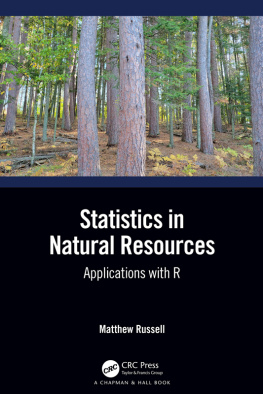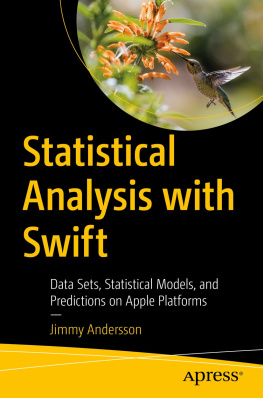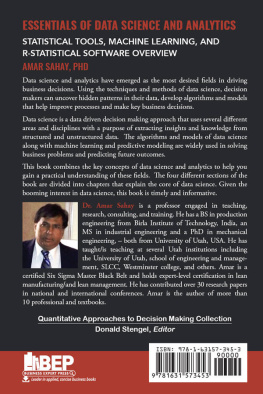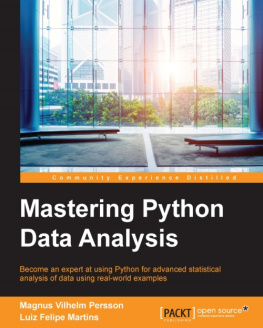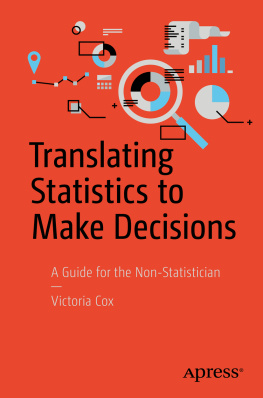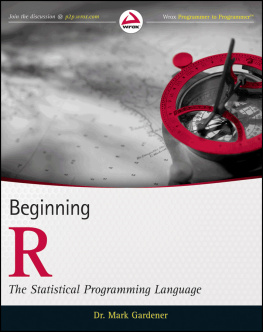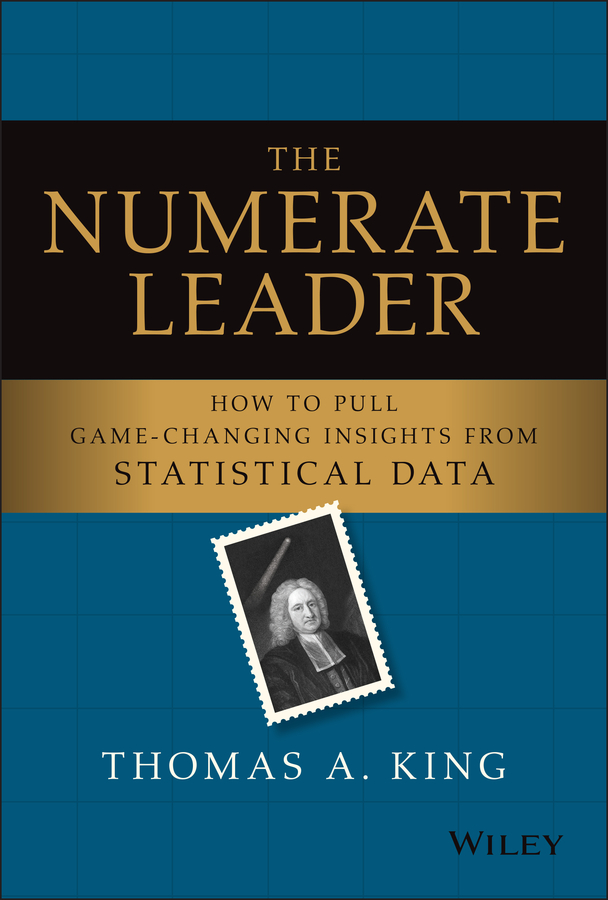
Table of Contents
List of Tables
- Chapter 2
- Chapter 3
- Chapter 4
- Chapter 5
- Chapter 8
- Chapter 10
- Chapter 12
- Chapter 14
- Chapter 15
- Chapter 16
List of Illustrations
- Chapter 1
- Chapter 3
- Chapter 4
- Chapter 6
- Chapter 7
- Chapter 8
- Chapter 9
- Chapter 10
- Chapter 11
- Chapter 12
- Chapter 13
- Chapter 14
- Chapter 15
- Chapter 16
- Chapter 17
Guide
Pages
The Numerate Leader
How to Pull Game-Changing Insights from Statistical Data
Thomas A. King

Copyright 2022 by Thomas A. King. All rights reserved.
Published by John Wiley & Sons, Inc., Hoboken, New Jersey.
Published simultaneously in Canada.
No part of this publication may be reproduced, stored in a retrieval system, or transmitted in any form or by any means, electronic, mechanical, photocopying, recording, scanning, or otherwise, except as permitted under Section 107 or 108 of the 1976 United States Copyright Act, without either the prior written permission of the Publisher, or authorization through payment of the appropriate per-copy fee to the Copyright Clearance Center, Inc., 222 Rosewood Drive, Danvers, MA 01923, (978) 750-8400, fax (978) 646-8600, or on the Web at www.copyright.com. Requests to the Publisher for permission should be addressed to the Permissions Department, John Wiley & Sons, Inc., 111 River Street, Hoboken, NJ 07030, (201) 748-6011, fax (201) 748-6008, or online at www.wiley.com/go/permissions.
Limit of Liability/Disclaimer of Warranty: While the publisher and author have used their best efforts in preparing this book, they make no representations or warranties with respect to the accuracy or completeness of the contents of this book and specifically disclaim any implied warranties of merchantability or fitness for a particular purpose. No warranty may be created or extended by sales representatives or written sales materials. The advice and strategies contained herein may not be suitable for your situation. You should consult with a professional where appropriate. Neither the publisher nor author shall be liable for any loss of profit or any other commercial damages, including but not limited to special, incidental, consequential, or other damages.
For general information on our other products and services or for technical support, please contact our Customer Care Department within the United States at (800) 762-2974, outside the United States at (317) 572-3993, or fax (317) 572-4002.
Wiley publishes in a variety of print and electronic formats and by print-on-demand. Some material included with standard print versions of this book may not be included in e-books or in print-on-demand. If this book refers to media such as a CD or DVD that is not included in the version you purchased, you may download this material at http://booksupport.wiley.com. For more information about Wiley products, visit www.wiley.com.
Library of Congress Cataloging-in-Publication Data
Names: King, Thomas A., 1960- author. | John Wiley & Sons, Inc., publisher.
Title: The numerate leader : how to pull game-changing insights from statistical data / Thomas A. King.
Description: Hoboken, New Jersey : Wiley, [2022] | Includes bibliographical references and index.
Identifiers: LCCN 2021027855 (print) | LCCN 2021027856 (ebook) | ISBN 9781119843283 (cloth) | ISBN 9781119843306 (adobe pdf) | ISBN 9781119843290 (epub)
Subjects: LCSH: Statistical literacy. | Commercial statistics.
Classification: LCC QA276 .K483 2021 (print) | LCC QA276 (ebook) | DDC 001.4/22dc23
LC record available at https://lccn.loc.gov/2021027855
LC ebook record available at https://lccn.loc.gov/2021027856
Cover Image: Edmond Halley: GeorgiosArt/Getty Images
Comet: ZU_09/Getty Images
Postage Stamp: IkonStudio/Getty Images
Cover Design: Wiley
PREFACE
Since you've cracked open this book, permit me a few guesses. In your educational journey, you have taken at least one introductory statistics class. That course involved associating types of story problems with as many formulas. Success meant matching formulas to stories and then plugging and chugging to arrive at so-called answers that could be measured to decimal places.
You then prepared for a final exam by cramming facts into short-term memory. You arrived at the testing location at the appointed hour, attacked assigned questions, submitted the completed test, celebrated with friends, and then cleared your mind to gird for the next task on that semester's to-do list. Today, any effort to recall lessons learned yields little beyond hazy memories.
This story played out four times in my academic travels. I studied introductory statistics in high school, college, a master's program designed to teach accounting to liberal arts students, and then an MBA program. Receiving decent grades from each trip to the well, I viewed myself as quantitatively literate and accepted an insurance job with confidence. The Greeks had another word for this trait hubris, outrageous arrogance, which brings misfortune to those so afflicted.
My assignment was simple: review historical car accident data to set future prices. If prices were too high, we wouldn't sell any insurance; if too low, resulting claims costs would swamp any premiums collected and bring financial loss. Should pricing actions bring profitable growth, I would be rewarded; failure, encouraged to pursue other career opportunities.
I stumbled through early assignments with a track record unblemished by success. Time spent in the classroom offered little benefit when faced with messy, real-world data. Sufficiently self-aware to recognize that I did not know what I was doing, I sought help from more informed coworkers.
The Beatles sang how they got by with a little help from their friends. Support offered by numerate colleagues salvaged my career. My mentors invested time to teach me how to think about the basic concepts discussed in this book.
I was then able to make a decent living applying these tools to reveal patterns buried in unfamiliar data sets, a skill rewarded by labor markets. Evidence of success was the ability to pay off our mortgage, send three kids to private colleges, and then secure my wife's permission to become an underpaid university professor at middle age.
More interestingly, Peter Lewis, Progressive's leader for much of my career there, set up a process to hire and train dozens of people like me. Analytic skills unleashed by this business model helped our company, one of many in a fragmented, mature industry, grow organically from obscurity into a Fortune 500 firm. In this process, Peter earned his way onto the Forbes 400, a compilation of the richest people in the world. Using this one data point, I infer that numerate organizations create wealth.
I now teach accounting to undergraduates, graduate students, and executives. Conversations with our alumni have convinced me that the power of statistical reasoning lies not in fancy tools or sophisticated software. Rather, informed decision-making results from the ability to remember and apply a few basic ideas. This book is a (mostly) qualitative introduction to these ideas.
My thesis is that anyone armed with a basic understanding of the ideas that follow may surface information from unfamiliar data sets. Turning data into information allows ordinary people to make material contributions to their employers and society.
Next page


